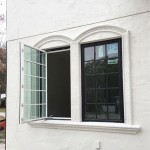How to Fix Scratches on Hard Plastic Car Interior
Hard plastic interiors are commonplace in modern vehicles due to their durability and cost-effectiveness. However, these surfaces are susceptible to scratches from various sources, including keys, bags, and even regular cleaning. While seemingly minor, these scratches can detract from the overall aesthetic of the vehicle's interior. Fortunately, addressing these imperfections is often achievable through various methods, ranging from simple cleaning to more involved repair techniques.
The following article outlines several approaches to address scratches on hard plastic car interiors, detailing the necessary materials, steps, and precautions for each method. The selection of the appropriate method depends on the severity and type of scratch, as well as the desired outcome and available resources.
Identifying the Type and Severity of the Scratch
Before attempting any repair, it is crucial to accurately assess the type and severity of the scratch. This assessment will dictate the most appropriate repair method. Scratches can be broadly categorized into the following:
Superficial Scratches: These scratches are typically light and only affect the surface layer of the plastic. They often appear as faint lines or scuff marks and may be removable with simple cleaning or polishing techniques. These scratches generally do not penetrate the color layer of the plastic.
Moderate Scratches: These scratches are deeper and more noticeable than superficial scratches. They may penetrate the color layer of the plastic, exposing the underlying material. Moderate scratches may require more aggressive repair methods, such as filling or sanding.
Deep Scratches: These scratches are the most severe and may significantly damage the plastic surface. They often involve noticeable gouges or indentations and may require professional repair or component replacement. Repairing deep scratches is often more complex and may involve multiple steps to restore the original appearance of the plastic.
The type of plastic also influences the repair approach. Some plastics are more porous than others, absorbing cleaning solutions or repair compounds differently. Identifying the plastic type, if possible, can help in selecting compatible products and techniques.
Basic Cleaning and Polishing Techniques
For superficial scratches, a thorough cleaning followed by polishing may be sufficient to restore the plastic surface. This approach is the least invasive and often yields satisfactory results for minor imperfections.
Materials Required:
- Microfiber cloths
- Interior cleaner
- Plastic polish
Procedure:
1. Cleaning: Begin by thoroughly cleaning the affected area with an interior cleaner. Spray the cleaner onto a microfiber cloth and gently wipe the scratched surface. Avoid applying the cleaner directly to the plastic, as this can lead to oversaturation and potential damage. Ensure all dirt and debris are removed before proceeding.
2. Drying: Allow the cleaned area to dry completely. This prevents moisture from interfering with the polishing process.
3. Polishing: Apply a small amount of plastic polish to a clean microfiber cloth. Gently rub the polish onto the scratched area in a circular motion. Apply moderate pressure and work the polish into the plastic. The polishing process aims to smooth out the edges of the scratch and reduce its visibility.
4. Buffing: Once the polish has been applied, use a clean microfiber cloth to buff the area. This removes any excess polish and enhances the shine of the plastic surface. Buff the area until it is smooth and the scratch is less noticeable.
5. Inspection: Inspect the repaired area under good lighting. If the scratch is still visible, repeat the polishing and buffing process. For more persistent scratches, consider using a more abrasive polish or proceeding to more advanced repair techniques.
Using Heat to Minimize Scratches
The application of heat can sometimes minimize the appearance of scratches on certain types of hard plastic. This method works by slightly melting the surface of the plastic, allowing it to flow and fill in the scratch. However, this technique should be used with caution, as excessive heat can permanently damage the plastic.
Materials Required:
- Heat gun or hairdryer
- Microfiber cloth
- Optional: Plastic polish
Procedure:
1. Preparation: Clean the scratched area thoroughly with an interior cleaner and allow it to dry completely. This ensures that no dirt or debris is trapped under the heated plastic.
2. Heat Application: Using a heat gun or hairdryer on a low setting, gently apply heat to the scratched area. Maintain a distance of several inches from the plastic surface to avoid overheating. Move the heat source back and forth in a sweeping motion to distribute the heat evenly. Observe the plastic closely for any signs of melting or discoloration. The goal is to soften the plastic slightly, not to melt it completely.
3. Smoothing: While the plastic is still warm and pliable, use a clean microfiber cloth to gently rub the area. Apply light pressure and work the cloth in a circular motion. This helps to smooth out the scratch and blend it into the surrounding plastic.
4. Cooling: Allow the plastic to cool down naturally. Avoid using water or other cooling methods, as this can cause the plastic to warp or crack.
5. Polishing (Optional): Once the plastic has cooled, apply a plastic polish to further enhance the appearance of the repaired area. This helps to restore the shine and remove any residual marks or imperfections.
Caution: It is imperative to exercise extreme caution when using heat to repair plastic. Overheating the plastic can cause irreversible damage, including melting, warping, and discoloration. It is recommended to practice this technique on an inconspicuous area of the plastic before attempting to repair a more visible scratch.
Filling and Sanding Deeper Scratches
For scratches that are too deep to be removed by cleaning, polishing, or heat application, filling and sanding may be necessary. This method involves filling the scratch with a plastic filler and then sanding it down to create a smooth, even surface.
Materials Required:
- Plastic filler
- Sandpaper (various grits, e.g., 400, 600, 800, 1000, 2000)
- Sanding block
- Microfiber cloths
- Interior cleaner
- Primer (optional)
- Color-matched paint (optional)
- Clear coat (optional)
Procedure:
1. Preparation: Clean the scratched area thoroughly with an interior cleaner and allow it to dry completely. Lightly sand the area around the scratch with 400-grit sandpaper to create a rough surface for the filler to adhere to.
2. Filler Application: Apply a small amount of plastic filler to the scratch, using a spatula or similar tool. Ensure the filler completely fills the scratch and extends slightly beyond the surrounding surface. Avoid applying excessive filler, as this will make the sanding process more difficult.
3. Drying: Allow the filler to dry completely according to the manufacturer's instructions. This may take several hours or even overnight.
4. Sanding: Once the filler is dry, begin sanding it down to match the surrounding surface. Start with 400-grit sandpaper to remove the bulk of the filler. Use a sanding block to ensure a flat, even surface. Gradually move to finer grits of sandpaper (e.g., 600, 800, 1000, 2000) to smooth out the surface. Wet sanding with 2000-grit sandpaper can further refine the finish.
5. Cleaning: After sanding, thoroughly clean the area with an interior cleaner to remove any sanding dust.
6. Painting (Optional): If the scratch penetrated the color layer of the plastic, and the filler is a different color than the original plastic, it may be necessary to paint the repaired area. Apply a primer coat, followed by several thin coats of color-matched paint. Allow each coat to dry completely before applying the next. Finish with a clear coat to protect the paint and enhance the shine.
Caution: Sanding can produce dust that is harmful to breathe. Wear a dust mask or respirator during the sanding process. Ensure adequate ventilation in the work area. Color matching can be challenging. Consult with an automotive paint specialist for assistance in selecting the correct paint color.
The success of any scratch repair method depends on careful preparation, patience, and the use of appropriate materials. In cases of severe damage or uncertainty, consulting with a professional auto detailer is recommended to ensure the best possible outcome. These professionals have the experience and tools necessary to address complex repairs and match factory finishes.

How To Fix Scratched Interior Panels In Your Car Holts Auto Site
How To Remove Scratches From A Car S Interior Ifixit Repair Guide
How To Remove Scratches From A Car S Interior Ifixit Repair Guide

How To Remove A Scuff Mark Or Scratch From Your Car Dashboard

How To Remove Scratches From Car Interior Fantastic Services

Fix Scratched Car Interior Trim Panels Easy Remove Scratches
How To Remove Scratches From A Car S Interior Ifixit Repair Guide

How To Repair Car Interior Scratches Sc And Blemishes Motors Blog
How To Remove Scratches From A Car S Interior Ifixit Repair Guide
How To Remove Scratches From A Car S Interior Ifixit Repair Guide
Related Posts








